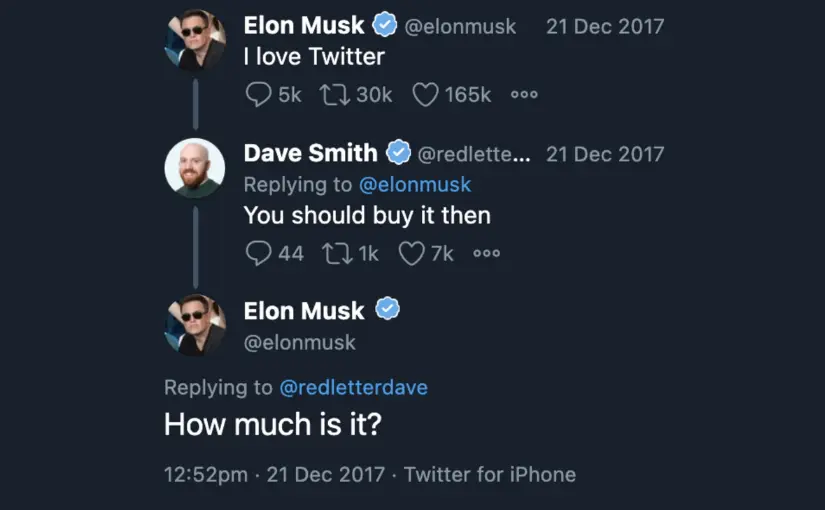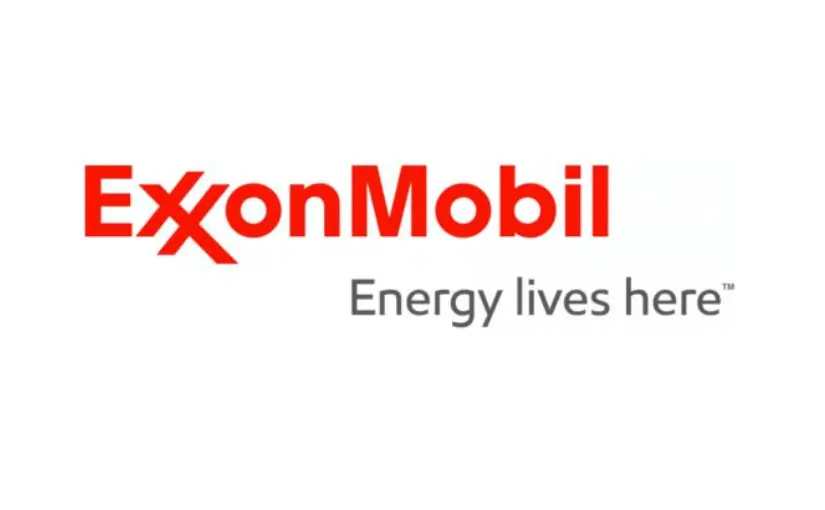Elon Musk’s recent move to rebrand Twitter as “X” has left the tech world buzzing with curiosity and intrigue. The decision to replace the iconic blue bird logo and take away over 15 years of readymade brand worth seems daring and risky. But rebranding your business is not a walk in the park.
Elon Musk’s Bold Move:

Source – Twitter
While Musk’s track record of success with ventures like SpaceX and Tesla speaks volumes about his ability to envision and execute groundbreaking ideas, the rebranding of a well-established platform like Twitter comes with inherent risks. Straying from a recognizable brand identity built over 15+ years could lead to confusion among existing users and may require significant effort to gain traction with new audiences.
Twitter’s rebranding is the perfect time for us to take a deep dive into the concept of rebranding your business.
In this article, we will explore the concept of rebranding, its necessity, and delve into some rebranding examples.
Understanding Rebranding:
Rebranding is a strategic decision that goes beyond a mere logo change. It involves a comprehensive overhaul of a company’s identity, encompassing its name, visual elements, messaging, and even its core values. Successful rebranding can breathe new life into a brand, strengthen its market position, and resonate better with evolving customer preferences. However, it’s crucial to navigate the process carefully to avoid alienating loyal customers and stakeholders.
The Importance of Comprehensive Overhaul:
Rebranding is more than just a superficial makeover; it requires a deep analysis of the brand’s essence and its relevance in the current market landscape. Companies must evaluate not only their visual identity but also their brand story, values, and mission to ensure consistency and authenticity throughout the rebranding process. A well-executed rebrand can redefine a brand’s perception and create emotional connections with customers, driving long-term loyalty and growth.
Building a Cohesive Identity:
Incorporating a cohesive identity is paramount during rebranding. Brands must align all elements, including logo, color palette, typography, and brand voice, to create a seamless and unified representation of their essence. This holistic approach enables the brand to convey a consistent message across various touchpoints, making it easier for customers to recognize and connect with the brand.
Learn more about the Dos and Don’ts of Rebranding.
When is Rebranding Necessary?
Rebranding your business is not a decision to be taken lightly. It should be considered when certain circumstances demand a new identity to better align with the company’s vision and goals. Some key situations where rebranding becomes necessary include:
1. Outdated Image:
In the fast-paced world of technology and ever-changing consumer preferences, brands risk becoming stale and irrelevant if they do not adapt their image to match current trends. Rebranding allows companies to shed their outdated image and present a fresh face to the world, capturing the attention of a new generation of customers.

Once a dominant force in the mobile phone industry, Nokia faced a decline in the early 2000s as it failed to keep up with the rapidly evolving smartphone market. While Nokia had a strong presence in the feature phone era, its image became outdated and irrelevant when smartphones took over. In response to this changing landscape, Nokia decided to undergo a comprehensive rebranding to shed its outdated image and reposition itself as a modern smartphone manufacturer. The rebranding efforts included a new logo, sleek design elements, and a renewed focus on innovation. Although Nokia faced challenges in its journey back to relevance, the rebranding allowed the company to capture the attention of a new generation of smartphone users.
2. Diversification:
When a company expands its product or service offerings significantly, rebranding can help create a cohesive identity that encompasses the broader range of offerings. A unified brand image reinforces the brand’s position as a reliable provider across its diverse offerings, boosting customer trust and loyalty.

Credit – Los Angeles Times
Originally known as an online bookseller, Amazon rapidly expanded its product offerings to include various categories such as electronics, clothing, home goods, and cloud computing services. To reflect its diverse range of offerings, Amazon decided to undergo a rebranding process. The company streamlined its logo and introduced a cohesive visual identity that represented the brand’s commitment to being a one-stop-shop for a wide array of products and services. By rebranding as the “Everything Store,” Amazon successfully communicated its ability to meet diverse customer needs under a unified brand image, strengthening customer trust and loyalty.
3. Mergers and Acquisitions:
In cases of mergers or acquisitions, rebranding can signal a fresh start, integrating the strengths of both entities under a unified identity. It helps to eliminate confusion and establish a clear identity for the newly formed entity, fostering a sense of unity among employees and customers.

In 1999, Exxon and Mobil, two major oil companies, merged to form ExxonMobil. The merger resulted in the need for a rebranding to establish a unified identity for the newly formed entity. The companies opted for a simple, modern, and distinctive logo that combined elements from both brands. The rebranding allowed ExxonMobil to present itself as a powerful and unified force in the oil industry, leveraging the strengths of both entities while maintaining a clear and recognizable identity for employees and customers alike.
4. Negative Perception:
Brands tarnished by negative public perception may consider rebranding as a strategic move to rebuild trust and credibility. A successful rebranding campaign can shift the narrative, highlighting positive aspects and showcasing a commitment to change, thereby winning back customer trust.

In the early 1980s, Tylenol faced a severe crisis when some of its products were tampered with, resulting in multiple deaths. The incident significantly damaged the brand’s reputation and led to widespread negative perception. In response, Johnson & Johnson, the parent company of Tylenol, launched an extensive rebranding campaign to rebuild trust and credibility. The company introduced tamper-evident packaging, enhanced safety measures, and transparent communication about its commitment to consumer safety. Through its successful rebranding efforts, Tylenol not only regained customer trust but also became a symbol of corporate responsibility and crisis management.
5. Market Changes:
Rebranding can be necessary when a company aims to pivot its business model or target new markets due to shifts in industry trends. Adapting to changing market demands can position the brand for future growth and relevancy.

Originally a DVD rental service, Netflix recognized the shift in consumer behavior and the rise of online streaming as the future of entertainment consumption. To adapt to these market changes, Netflix decided to rebrand itself as a streaming platform, moving away from its DVD-by-mail model. The company introduced a new logo and shifted its focus to digital content delivery. This rebranding allowed Netflix to position itself as a leading player in the streaming industry, catering to the evolving preferences of consumers and securing its position as a dominant force in the entertainment market.
Challenges and Opportunities of Rebranding
Elon Musk’s vision for “X” as an “everything app” is ambitious and could revolutionize global communication. After all, in the late 1990s, Apple did transform from a struggling computer company to a technology giant by adopting a minimalistic, modern, and innovative brand identity. The “Think Different” campaign repositioned Apple as a revolutionary brand that challenged the status quo.
However, rebranding Twitter to “X” comes with challenges, such as maintaining user loyalty during the transition and effectively communicating the app’s new capabilities. Tropicana changed its packaging design in 2009, eliminating the familiar orange with a straw image. Customers found it confusing, and sales declined drastically which shows that rebranding can also lead to failure.
Additionally, competing in the super app space, especially outside of Asia, will require a strategic approach and relentless focus on user experience.
We believe that the success of the “X” rebranding will depend on Musk’s ability to execute a seamless transition, leverage his expertise in AI, and align the app’s features with user demands. We eagerly await further developments and will be closely monitoring user feedback and market response to assess the impact of this transformation.
Unlock Your Brand’s Potential with Sunnyday Consulting!
Rebranding is a powerful tool that can shape a company’s future. But previous rebranding examples have shown that a successful rebrand requires careful consideration and professional guidance to ensure a seamless transition that resonates with the target audience. If your company is considering rebranding, partner with Sunnyday Consulting to ensure a smooth and successful transformation. Contact us today at support@sunnydayconsulting.com or call us at (+91) 79777 31552 to schedule a consultation.
To know more about the latest market trends, subscribe to our newsletter today!
FAQ
1 Is Twitter changing its name to X?
Yes, Twitter is undergoing a rebranding process and changing its name to "X." This decision is part of Elon Musk's vision to transform Twitter into an "everything app" and create a global marketplace for various services, powered by AI.
2 Why did Twitter turn to X?
Twitter's rebranding to "X" is driven by Elon Musk's ambition to expand its impact and transform it into an all-encompassing platform. The move aims to go beyond Twitter's traditional social media functions and offer a suite of services like messaging, social networking, payments, and e-commerce, similar to the "super app" concept popular in Asian markets like WeChat and Grab.
3 What's with the X on Twitter?
The letter "X" holds significance for Elon Musk, and it is not the first time he has used it in his ventures. He co-founded X.com in 1999, an online bank that later merged with Confinity and became PayPal. Additionally, Musk named his child with Claire Boucher (Grimes) as "X." When Musk purchased the domain X.com, it further demonstrated his deep affinity for the letter. Now, he is rebranding Twitter as "X" to symbolize his grand vision for the platform as an "everything app."



